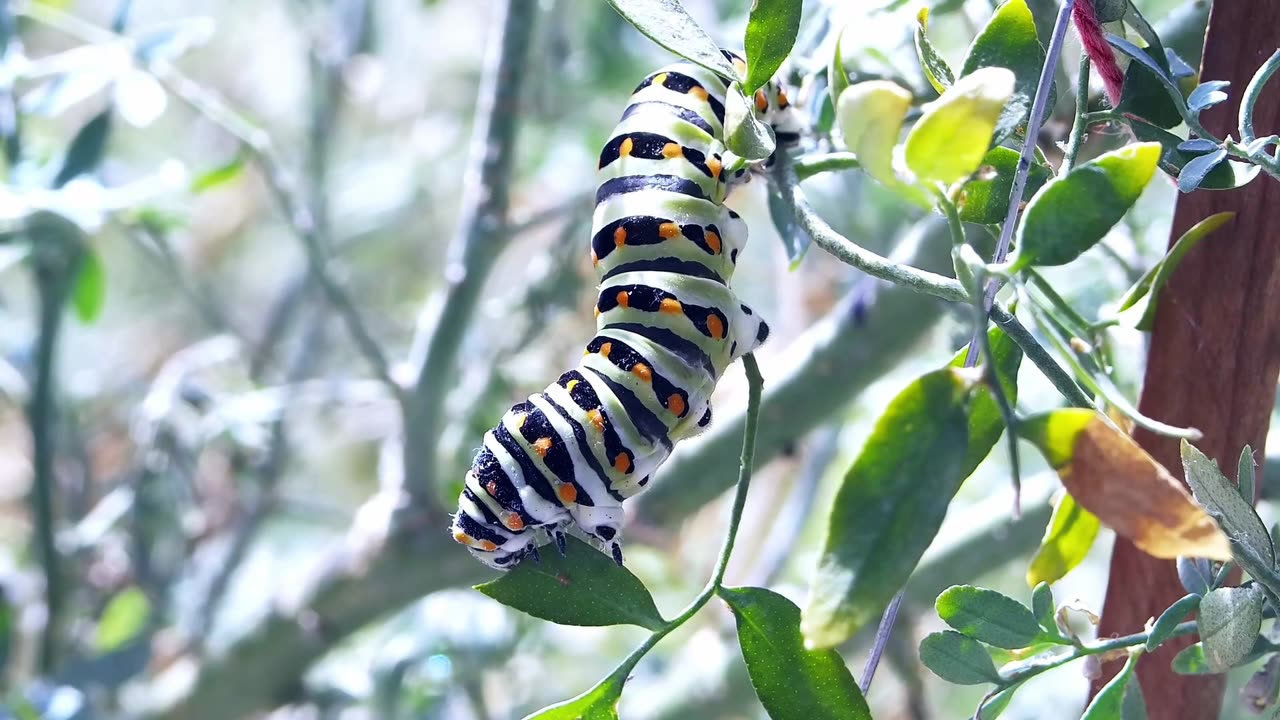Premium Only Content

"The Journey of a Caterpillar: Nature's Tiny Transformative Wonder"
Caterpillars are the larval stage of butterflies and moths, belonging to the order Lepidoptera. They are primarily known for their role in metamorphosis, where they undergo a dramatic transformation into adult butterflies or moths. Caterpillars are characterized by their elongated, segmented bodies, which are often covered in various forms of protective adaptations like hairs, spines, or colorful patterns.
### Key Characteristics:
1. **Body Structure:** Caterpillars have a soft, cylindrical body divided into segments. They typically have three pairs of true legs near their head and several pairs of fleshy prolegs along the rest of their body.
2. **Feeding:** Most caterpillars are herbivores, feeding on leaves and plants. Some species are known for being voracious eaters, consuming large amounts of foliage in a short time.
3. **Defense Mechanisms:** To protect themselves from predators, caterpillars use various strategies. These include camouflage, toxic chemicals stored in their bodies, and mimicry, where they resemble more dangerous creatures like snakes.
4. **Metamorphosis:** After reaching a certain size, a caterpillar will form a pupa or chrysalis, entering a stage of dormancy. During this time, it undergoes metamorphosis, re-emerging as a fully formed adult butterfly or moth.
5. **Habitat:** Caterpillars are found in a wide range of environments, from forests and grasslands to gardens and agricultural fields. Their habitat depends largely on the type of plants they feed on.
6. **Lifecycle:** The life cycle of a caterpillar includes several stages: egg, larva (caterpillar), pupa (chrysalis), and adult (butterfly or moth). The length of each stage can vary depending on the species and environmental conditions.
Caterpillars are an essential part of the ecosystem, serving as a food source for many animals, including birds and small mammals, and playing a vital role in the pollination process through their adult forms. However, they can also be considered pests in agriculture due to their feeding habits on crops.
-
 40:09
40:09
Friday Beers
1 hour agoWii Golf Gets Heated: Friday Beers vs Full Squad Gaming
-
 58:35
58:35
BonginoReport
4 hours agoFormer Trans Athlete Accepts Biological Reality - Nightly Scroll w/Hayley Caronia (Ep.24) - 04/10/25
93.4K48 -
 LIVE
LIVE
megimu32
1 hour agoON THE SUBJECT: Movies We Had Zero Business Watching.. But Totally Did!
112 watching -
 1:26:01
1:26:01
Kim Iversen
5 hours agoThe Fight Is ON: Grifters, Gatekeepers & Government Overreach
104K183 -
 2:16:31
2:16:31
Redacted News
4 hours agoLeaked Audio EXPOSES AIPAC's Shocking Grip on Trump's National Security Team and Inner Circle
167K90 -
 1:13:38
1:13:38
Dr. Drew
9 hours agoSalty Cracker: Tariffs & Deportations & 3rd Trump Term, Oh My! – Ask Dr. Drew
45.3K53 -
 55:18
55:18
LFA TV
9 hours agoUndoing Decades of Corruption Won’t Come Easy | TRUMPET DAILY 4.10.25 7PM
21.9K1 -
 59:07
59:07
theDaily302
11 hours agoThe Daily 302- James Patrick
4.65K1 -
 LIVE
LIVE
Quite Frankly
7 hours ago"Top 10 CIA Ops, Esoteric Hollywood, and More" ft. Jay Dyer 4/10/25
784 watching -
 58:40
58:40
Motherland Casino
20 hours agoMel x Ara
1.14K3